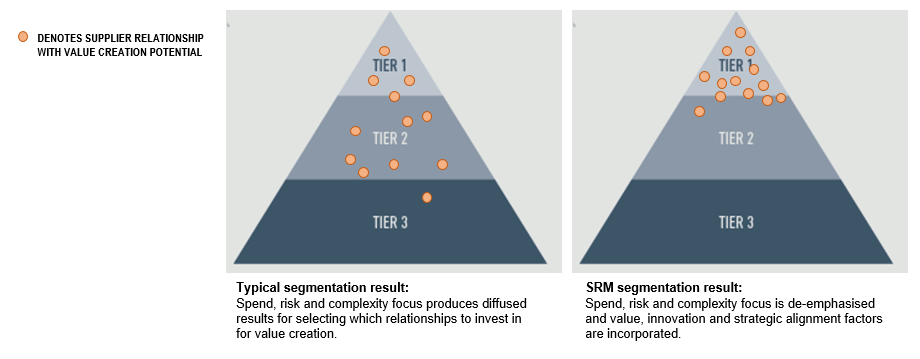DISCOVER WHY SEGMENTING YOUR SUPPLIERS IS SO IMPORTANT
Segmentation exercises can take weeks, if not months, to complete, and for this reason alone, many organisations are living with the results of an approach which is out of step with the businesses’ supply chain goals. But it doesn’t have to be this way.
To get results, segmentation needs to be performed in an unbiased, criterion-referenced way. Clarity between what makes a supplier strategic (vs. critical) is needed. And an objective assessment of the mutuality and reciprocity that is present in high-value, high-potential supplier relationships is essential. The dynamic segmentation approach developed by State of Flux is a research-based solution that means the suppliers that you should be accessing customer of choice benefits from will be in Tier 1 when we’ve completed the project.
At the centre of the approach is a framework of ready-to-use segmentation criteria that are designed to uncover the value opportunities in your supplier portfolio, however, it’s not a ‘one size fits all' approach. Our framework has been designed to be adapted and tuned to the nuances and complexities of each industry and context it is applied to.
The result is a segmentation output on which you can build a supplier management strategy that can deliver value protection and value creation.
Does your segmentation model hide or reveal the value potential of your supply chain?
You get what you are looking for.
Segmentation is an important subject because it sets the stage for effective governance, and, in turn, the treatment strategy that is used with each supplier. Based on our research, the majority of organisations use spending, criticality and risk as the criteria for segmenting their suppliers. This is great when risk and performance management is the focus, but inadequate for value-creating SRM.
The mismatch between value creation goals and segmenting to protect criticality is illustrated in the diagram below.

To avoid the lost or unidentified value creation that will arise from ineffective segmentation, a more dynamic and flexible approach is needed. Done properly, a segmentation exercise will identify and ensure the supplier relationship that you should invest in are in Tier 1.
It doesn’t have to be this way. Talk to us today:
